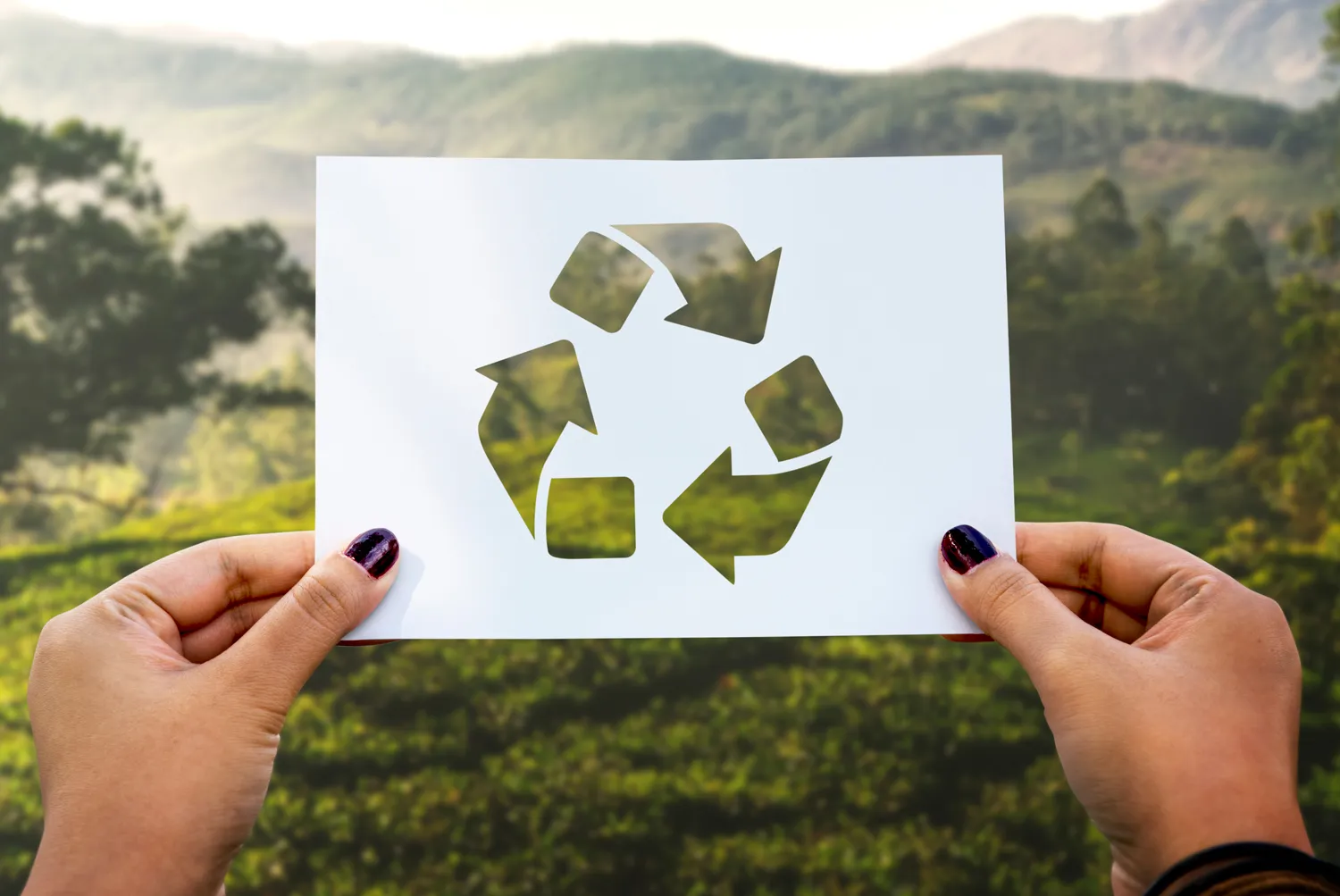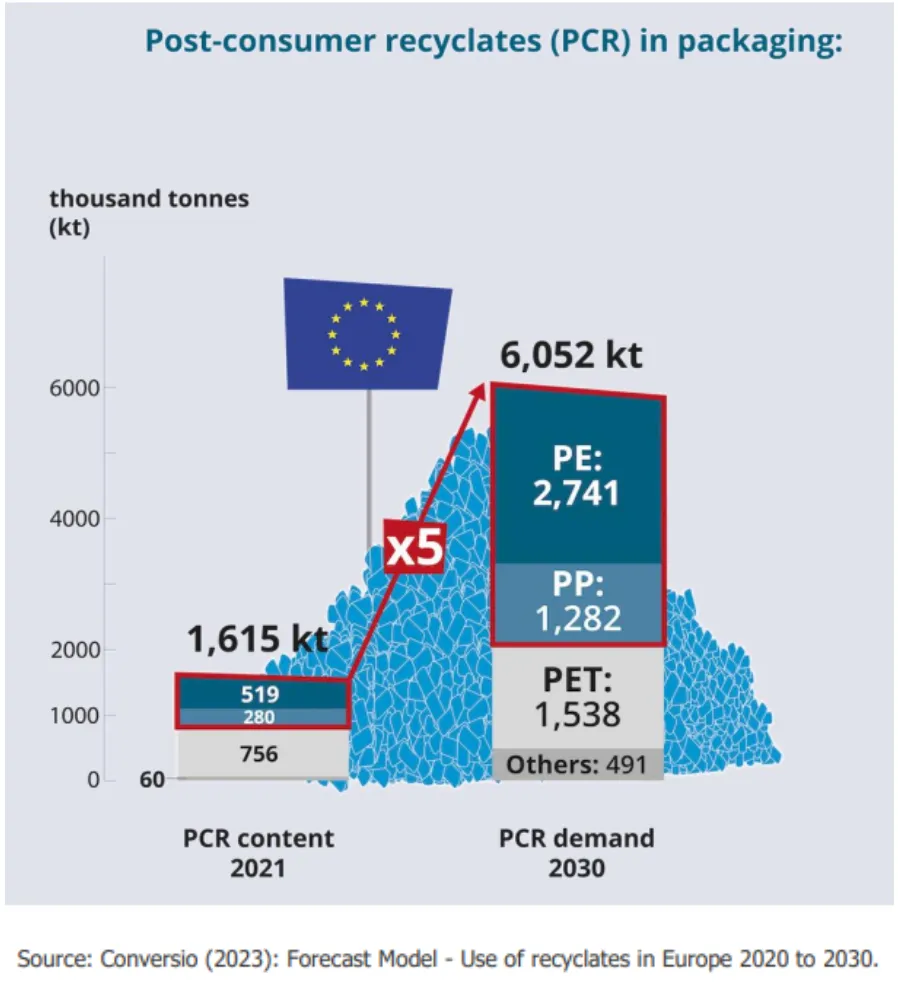The new PPWR regulation (EU packaging regulation)
The proposal for a PPWR regulation adopted by the European Union replaces the currently valid 1994 packaging directive. The new regulations are intended to stop the predicted rising trend in packaging waste by 2030.
In the following blog article, we shed light on the most important questions relating to this topic.

What is the PPWR regulation?
PPWR stands for Packaging and Packaging Waste Regulation.
This new regulation replaces the currently valid 1994 packaging directive and is part of the European Union's Green Deal. It helps to reduce the environmental impact of packaging and to promote a sustainable circular economy.
What is the aim of the PPWR regulation?
The aim is to make all packaging reusable or recyclable by 2030. A key objective is reducing the complexity of packaging materials in order to simplify recycling processes. The regulation also promotes measures to reduce packaging and packaging waste.
The PPWR is committed to ensuring that more recycled plastic packaging is used and obliging manufacturers to act responsibly. One focus is on introducing requirements for the recycled content of plastic packaging.
What impact does the PPWR regulation have on the packaging industry?
The PPWR regulation has consequences for recyclable packaging and plastic packaging. Specifically, it regulates the following points:
- Reusable packaging options
- Recyclable packaging design
- Prohibition of unnecessary packaging
- Clear recycling labelling
Reusable packaging options
In future, all packaging that enters the European market must be recyclable. Packaging is rated according to grades ranging from A (recyclability ≥ 95 %) to D (< 70 %). Packaging with a recyclability grade of below 70 % will be banned from 2030. Stricter thresholds will apply from 2038. The aim is to promote the use of recycled materials and replace primary raw materials.
Recyclable packaging design
The packaging design must be compatible with the systems of separate collection and sorting. The new PPWR regulation stipulates binding percentages of recycled content in plastic packaging. The table below provides information on the proportion of recycled content in the various types of packaging from 2030 and from 2040. The minimum percentages are calculated as an average per packaging category and manufacturing plant following monitoring for a period of one year.
| Packaging type | from 2030 | from 2040 |
| contact-sensitive packaging made of PET | 30 % | 50 % |
| contact-sensitive packaging (except PET and beverage bottles) | 10 % | 25 % |
| single-use beverage bottles | 30 % | 65 % |
| other plastic packaging | 35 % | 65 % |
Challenges Due to PPWR Regulations for Recyclable Design
For certain packaging materials, such as stretch film, it is not currently possible to fully incorporate the required percentage of recycled material due to technological limitations. What can companies do if they fail to meet these requirements?
Companies that are unable to meet the required recycling percentages have the option to apply for an extension of up to 5 years. The approval process for the application can take up to one year. After the extension period expires, it is possible to submit a new application.
What does all this mean for the recycling industry?

What has happened so far? When does the PPWR regulation come into effect?
- The process towards the new PPWR regulation began in November 2022 with a proposal from the European Commission.
- Various votes and negotiations were held during 2023.
- The final vote in the European Parliament took place in April 2024.
- Following the European elections in June, the regulation will be published in the EU's Official Journal in the last quarter of 2024. It comes into effect 20 days later.
- From 2026, the new regulations will be binding.
The PPWR regulation is a vital step for the circular economy
The introduction of the PPWR regulation ensures a sustainable future in Europe.
- The regulation replaces the previous packaging directive.
- It sets strict requirements for the reuse and recyclability of packaging.
- The introduction of binding recycling grades will reduce the consumption of primary raw materials. This will increase demand for recycled materials.
- With clear labelling and design requirements, packaging should be easier to recycle and more environmentally friendly.
The information provided does not replace legal advice. For more information, visit the European Parliament website:
https://www.europarl.europa.eu/news/en/press-room/20240419IPR20589/new-eu-rules-to-reduce-reuse-and-recycle-packaging